The computer of the future
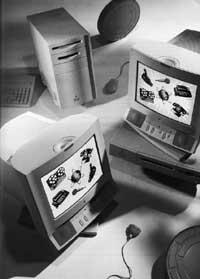
The computer industry does not stop miniaturizing the components and increasingly paper on the computer. Today there are computers that know the voice and fulfill the said, that know the writing, that receive television programs, that have wireless phone, that send fax from anywhere to anywhere, etc. According to some researchers, in the future you can ask the computer anything.
Meanwhile, writers come together thinking that one will offer you what is missing. The IBM and “Apple” houses, which so far have been enemies, for example, are about to meet and do joint investigations. For its part, ATT, specializing in telecommunications, has come to collaborate with Microsoft, leader in computer software, which has focused on interactive television.
Improving the microprocessor
When in 1971 Gordon Moore, founder of the “Intel” house, claimed that capabilities would double periodically, he was not doing science fiction. He knew about his work and has since supplied processors called compatible microcomputers that have spread around the world. The first microprocessor made in 1971 had 2,300 transistors and those made in 1992 with 1.2 million transistors, with an average power of 50 mips. (mips is the acronym for “millions of instructions per second” and indicates the power of the chip.) Intel’s latest microprocessor, the so-called “Pentium,” has broken all records, with 3.4 million transistors and an average power of 100 mips.
Large microprocessor providers like Intel or Motorola are hard to know in detail how far they'll get from there. However, by 2000 microprocessors will have a power of 2,000 mips and 100 million transistors (perhaps up to 500 million). All this, for the moment, is just an advertisement and technology can evolve faster than expected.
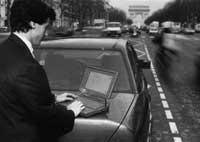
The capacity of the processor depends on its number of transistors. The more transistors you have, the faster the processor will calculate and process the information. Therefore, more and more transistors need to be put into miniaturization. Currently the transistor circuits range from 0.8 to 0.6 microns (the micron is one thousandth of the millimeter). Considering that a human hair has a thickness of 75 microns, it is very small. In addition, today, silicon based technologies can claim that they will decrease to 0.1 microns.
In addition, the working speed of the processor should be considered. The current ranges from 16 to 66 megahertz (MHz), that is, from 16 million in every second to 66 million cycles, but it is estimated that they will arrive soon between 100 and 200 MHz. But that has an obstacle. The faster the processor speed, the more heat is generated. Therefore, radiators for heat diffusion are available in the circuits with the fastest processors.
In this way a few more megahertz are achieved, but in that sense the limitation of technology is close. In fact, as heat increases, the electrical characteristics of the circuit are not maintained and unwanted phenomena can occur.
However, in the future more and more transistors will be incorporated into the processors, with more functions. So far the mathematical coprocessor has been used to perform some calculations, but now there are processors who also do.
Sound and image on the computer
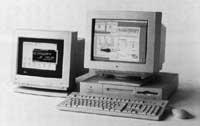
At present more and more functions in the same trend processor (image processing, visualization, etc.) is integration. While the heart of microcomputers (i.e. the microprocessor) is powerful enough to treat images and sound, some manufacturers have incorporated electronic cards into their machines for certain applications. They call it “multimedia”.
Pick up the computer and add the audio and video card. The audio card with the microphone or the connected “hi fi” string collects the sound and converts the analog signal into digital. The video card does the same with camera, magnetoscope or television images. Therefore, it is possible to view the TV show on the computer screen or, on the contrary, record the computer images in the video case.
Communication between incompatible electronic equipment is done by means of the term “convergence”. If the signal can be converted to digital (that is, if it can be placed in a binary code that uses 0 and 1), you can do everything. Apple, for example, has included audio and video functions on series computers. These computers digitize the sound at 44.1 MHz (like compact discs) and treat the signals of bilingualism according to NC, PAL or SECAM standards.
Computers that know the word and the writing
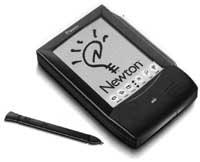
In addition, these computers know some words (rather, commands). Open document, close document, italicize text, etc. the computer understands. At the moment, the person does not know all the words he has said (“full spech”), but he is expected to soon reach the power to treat them all.
To know the words, computers extracted from Apple use the DSP (Digital Signal Processor) system to treat sound and image signals. This system has been developed by the American company ATT, leader in telecommunications. In fact, the DSP system is designed to equip the car phone. The user says a verbal name and the device itself automatically marks the corresponding phone number.
ATT has also created a new company called EO to develop this technology branch. They want to get a laptop without a keyboard. A microcomputer with data, fax and phone would also receive them once the writing is known. In this way, the user will have all telecommunications services along with the computer terminal.
Currently, Microsoft's home is at the top performing computer programs. A few months ago he presented the first system of knowledge of the word, but also this society, leader in the elaboration of the program, wants to work in other areas.
Computer television
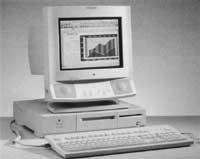
Microsoft, General Instruments and Intel collaborate in the development of a new product for next year. This is a box called “set-top-box”, which complements the cable TV decoder. In addition to cable programs, the owner of the box will have other services. You can select video games, purchase programs (from TV the user would make purchases directly) or television programs (movies).
The selection of the film that everyone wants cannot be done with the current cable system. And if a viewer chooses a film, it expands to the entire network and it is quickly saturated. In order to offer each of them its specific program, it will be necessary to completely modify the cable system, replacing it with a network of computers.
This network, known as ATM, is similar to the RNIS network (Réseau numérique à intégration de services), developed in France by the company Télécom. On television you can have a program chosen by each user, but the main feature of the network is that it is a very wide band that can simultaneously broadcast many television programs and movies.
For these services to work, the current TV receivers must be smarter and the box “Set-top-box” will have to be more similar to the computer, that is, it must also have a hard disk. As for the hard drive, in recent times there have been great advances. The firm Hewlett-Packard, through the Kittyhawk system, has created the smallest hard drive of all time. It weighs only 30 grams and has a capacity of 40 megas.
Smart Televisions
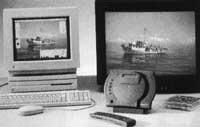
As for television, it must include the processor, memory, decoders and the DSP system. Finally, you must have electronic cards depending on the services purchased by the user. With them the data would be stored, the orders would be executed and, if necessary, the information received by cable would be decoded.
The latest advances in electronic cards are important. Epson launches his “Cardio” card shortly. This card, which is not even 6 millimeters thick, has the same intelligence as the computer even though its size does not exceed the credit card; chip, memory, hard disk, etc. On such computers, as technology progresses, a card is changed to your reader.
As miniaturization progresses, manufacturers are preparing appliances to offer new products and services. We know that by the end of the century we will have almost universal terminals, semi-computers and semi-centralists to work at home.
However, the main problem is getting a thin TV screen. Manufacturers like Toshiba or Sharp are working on this.
Buletina
Bidali zure helbide elektronikoa eta jaso asteroko buletina zure sarrera-ontzian











